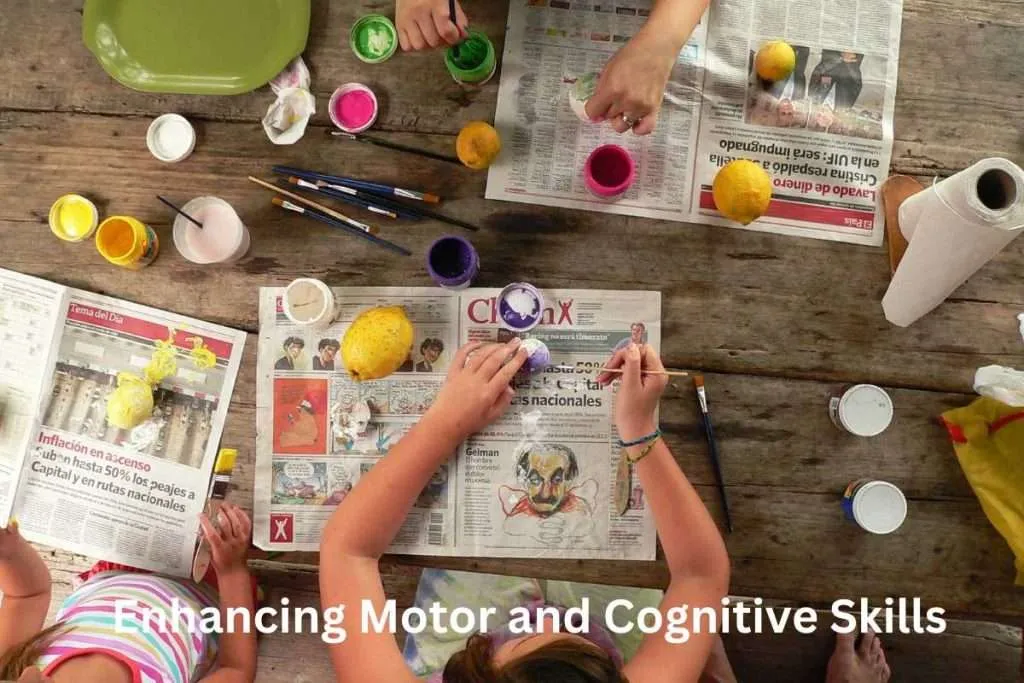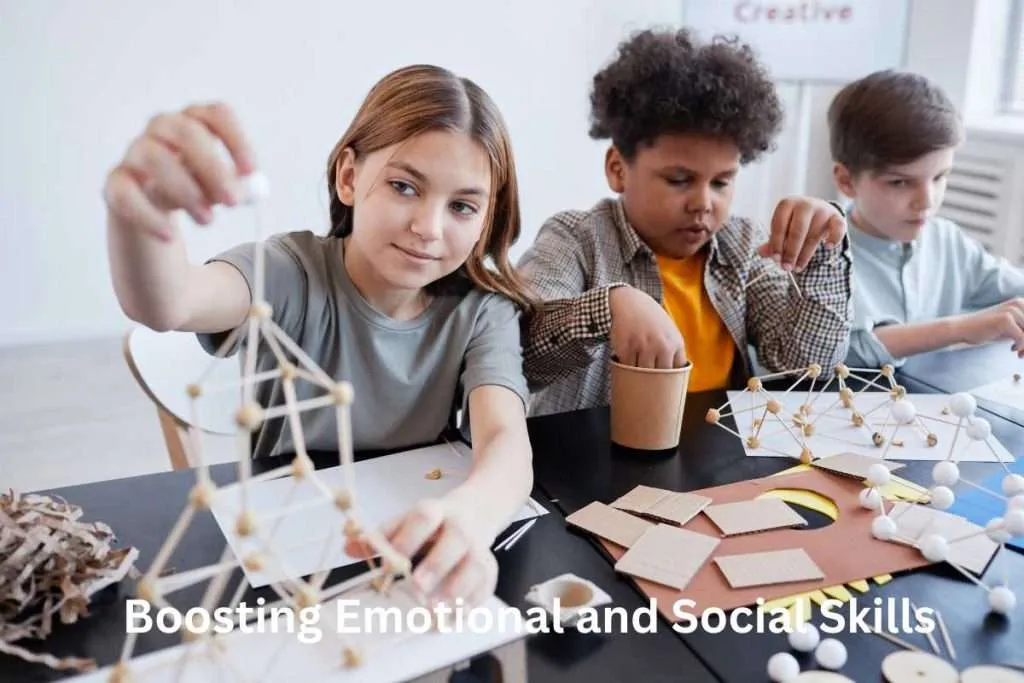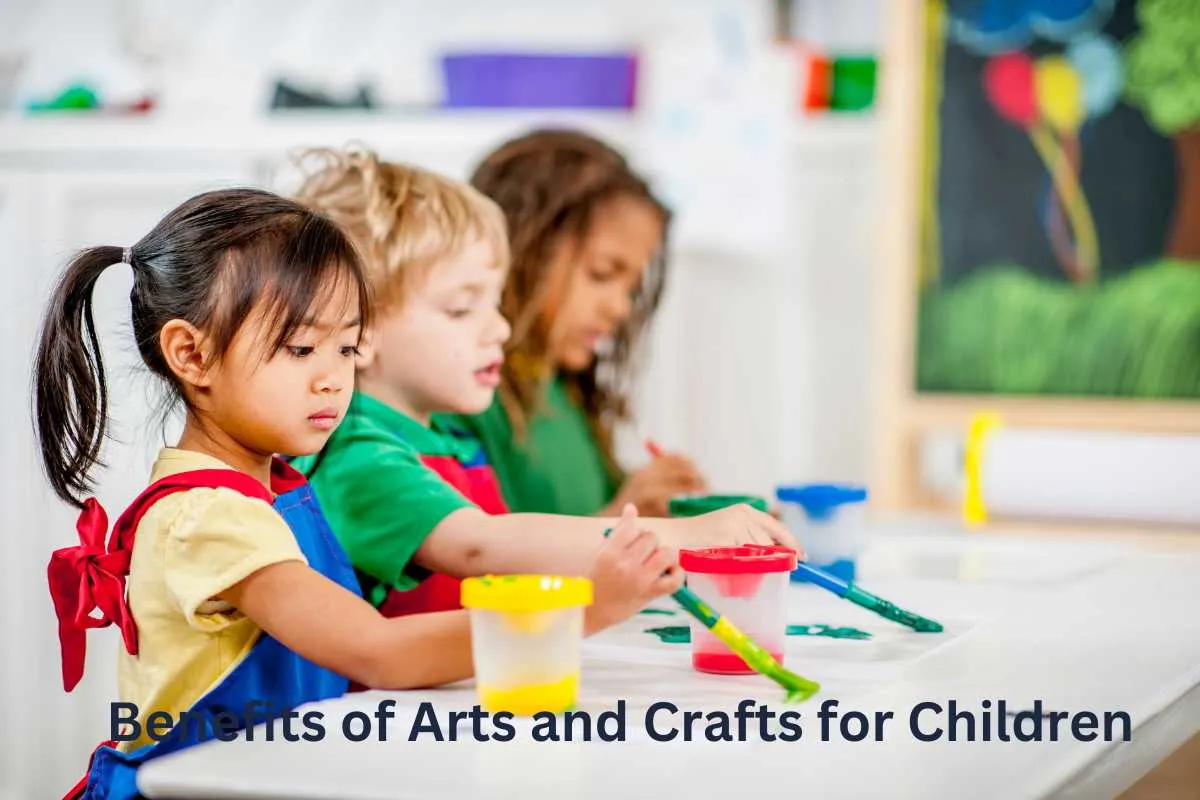Arts and crafts aren’t just fun and games for children; they’re gateways to cognitive, emotional, and motor skill development. Dive in as we explore how these creative pursuits shape young minds and set the foundation for lifelong learning.
Arts and crafts offer a myriad of developmental advantages for children. Engaging in these activities bolsters fine motor skills, aids in cognitive development, and fosters creativity. As children cut, glue, paint, and assemble, they refine hand-eye coordination and dexterity. Creating art enhances critical thinking, as kids make choices and solve problems. It also provides a platform for self-expression, allowing children to convey feelings and ideas. Participating in arts and crafts also boosts self-esteem, as kids take pride in their creations.
Key Takeaways
| Benefit | Description |
|---|---|
| Creativity Boost | Encourages children to express themselves and think outside the box. |
| Motor Skills Development | Handling brushes, scissors, and craft materials refines fine motor skills. |
| Hand-Eye Coordination | Activities like drawing, cutting, and pasting improve coordination between vision and hand movement. |
| Cognitive Development | Planning and executing crafts can enhance problem-solving and critical thinking skills. |
| Self-Esteem | Completing a craft project gives children a sense of accomplishment and boosts their confidence. |
| Cultural Awareness | Exploring crafts from different cultures can foster an appreciation and understanding of diversity. |
| Math Skills | Measuring, counting, and understanding shapes and patterns introduce fundamental math concepts. |
| Language Development | Discussing their creations and the process can enhance vocabulary and communication skills. |
| Patience & Persistence | Some crafts require waiting (e.g., for paint to dry) or repetitive actions, teaching children patience and persistence. |
| Emotional Expression | Art provides an outlet for children to express and process their emotions. |
| Social Skills | Working on group projects can teach cooperation, sharing, and negotiation. |
| Sensory Development | Engaging with various textures, colors, and materials stimulates the senses |
Unlocking Creativity and Imagination
Art and craft activities have the power to unlock the creativity and imagination of children. Through these activities, children can explore their creative side and express themselves in unique ways.
Fostering Creativity
Art and craft activities encourage children to think outside the box and come up with unique ideas. When children are given the freedom to create something on their own, they are able to tap into their creative potential. They can experiment with different colors, shapes, using different art supplies and art materials to create something that is truly their own.
Art and craft activities also allow children to problem-solve and find creative solutions. When they encounter a challenge, they are forced to think creatively to find a solution. This helps to build their problem-solving skills and encourages them to approach challenges with a creative mindset.
The Power of Imagination
Art and craft activities give children the opportunity to use their imagination and explore their creativity from a young age. When they are given a blank canvas, they can use their imagination to create anything they want. This helps to build their confidence and encourages them to think outside the box.
Through art and craft activities, children can also express themselves and their emotions. They can use their artwork to tell a story or convey a feeling. This helps them to develop their self-expression skills and gives them an outlet to express their emotions in a healthy way.

Enhancing Motor and Cognitive Skills
Arts and crafts are a great way to enhance your child’s motor and cognitive skills. Engaging in these arts and crafts encourage children to develop fine motor skills, hand-eye coordination, problem-solving abilities, critical thinking, concentration, control, and dexterity.
Developing Fine Motor Skills
Fine motor skills are essential for performing everyday life tasks such as writing, buttoning a shirt, and tying shoelaces. Arts and crafts activities such as drawing, coloring, cutting, and pasting can help your young kids develop these essential life skills from a very young age.
By holding a pencil, crayon, or scissors, your child is strengthening the muscles in their fingers and hands. This can help them with tasks that require controlled movements, such as writing.
Boosting Hand-Eye Coordination
Hand-eye coordination is the ability to coordinate the movements of your hands and eyes. Arts and crafts activities can help your child develop this skill by requiring them to use their hands to create something while also visually tracking what they are doing.
For example, when your child is drawing or painting, they are using their hands to create lines and shapes while also visually tracking what they are doing on the paper.
Promoting Problem-Solving Abilities
Arts and crafts activities can also help your child develop problem-solving abilities. For example, when your child is building a structure out of blocks or creating a collage, they are using their creativity and critical thinking skills to solve problems and come up with new ideas.
Such activities can help your child develop a sense of independence and self-confidence – its boosting self esteem art.
Encouraging Critical Thinking
Arts and crafts activities can also encourage critical thinking. When your child is creating something, they are using their imagination and creativity to come up with new ideas. This is vital early childhood education as it can help them develop their problem-solving skills and think outside the box.
Arts and crafts activities can help your child learn to make decisions and think critically about the materials they are using in their art project and how they can use them to create something new.

Learning Through Play
Arts and crafts provide a fun and engaging way for children to learn and develop important skills. Through play, children can explore different shapes, colors, and textures, and develop their creativity and imagination.
Understanding Shapes and Colors
Craft activities can help children develop an understanding of different shapes and colors. Through activities such as coloring, painting, and drawing, children can learn to recognize and name different colors, and identify different shapes such as circles, squares, and triangles.
These art projects can help to develop their cognitive and language skills, as well as their fine motor skills.
Engaging in Craft Activities
Engaging in craft activities can help children develop a range of important skills. By following instructions and using their hands to manipulate materials, children can develop their problem-solving skills, hand-eye coordination, and fine motor skills.
They can also develop their creativity and imagination by experimenting with different materials and techniques.
Craft activities can also help children to develop their social and emotional skills. By working collaboratively on a project, children can learn to communicate effectively, share ideas, and work together to achieve a common goal.
This can help to develop their confidence and independence, as well as their ability to work as part of a team.
Exploring with Doodle and Finger Paint
Doodle and finger paint activities can be a great way for children to explore their creativity and imagination. By using their fingers to create different shapes and patterns, children can develop their fine motor skills and hand-eye coordination with visual learning.
They can also experiment with different colors and textures, and learn to express themselves through art.
Doodle and finger paint activities can also be a great way for children to relax and unwind. By focusing on the process of creating art, children can develop their mindfulness and self-awareness, and learn to manage their emotions in a healthy way.

Boosting Emotional and Social Skills
Arts and crafts are a great way to boost your child’s emotional and social skills. Through creative activities, children can develop confidence, empathy, collaboration, emotional expression, and communication skills.
Building Confidence and Self-Esteem
Creating art can be a confidence booster for children. When children create something they are proud of, it can help them feel good about themselves and their abilities.
Arts and craft projects also provide children with a sense of control and autonomy. They can make their own decisions about what to create and how to create it, which can be empowering.
Cultivating Empathy and Collaboration
Arts and crafts can also help children develop empathy and collaboration skills. When children work on a project together, they learn to share materials, take turns, and work together to achieve a common goal. This can help them develop a sense of empathy and understanding for others. They learn to respect other people’s ideas and work together to create something that everyone can be proud of.
Expressing Emotions Through Art
Art is a great way for children to express their emotions. Through art, children can explore and express their feelings in a safe and healthy way. They can use different colors, shapes, and textures to convey different emotions. This can help children develop emotional intelligence and learn how to regulate their emotions.

The Therapeutic Effects of Arts and Crafts
Arts and crafts are not only fun activities for children, but they can also have therapeutic effects on their mental health. Engaging in creative activities can help reduce stress and anxiety, promote mental wellbeing, and provide a sense of accomplishment and self-esteem. In this section, we will explore the therapeutic effects of arts and crafts for children.
Reducing Stress and Anxiety
Creating art can be a great way to reduce stress and anxiety in children. When they are focused on a creative project, they can forget about their worries and concerns. Studies have shown that engaging in art activities can lower cortisol levels, which is a hormone associated with stress. By reducing stress, children can improve their overall mental health and wellbeing.
Promoting Mental Wellbeing
Art activities can also promote mental wellbeing in children. When they create something, they feel a sense of accomplishment and pride in their work. This can boost their self-esteem and confidence. Additionally, art can provide an outlet for children to express their emotions and feelings in a safe and non-judgmental way. This can help them develop emotional intelligence and coping skills.

Arts and Crafts as a Tool for Learning Life Skills
Arts and crafts are not just about creating something beautiful or having fun; they can also be a valuable tool for learning important life skills. Here are some ways that arts and crafts can help children develop skills that will benefit them throughout their lives.
Developing Responsibility and Adaptability
When children engage in arts and crafts activities, they learn to take responsibility for their work. They must plan, organize, and execute their ideas, and they must take care of their materials and tools. This process teaches them to be accountable for their actions and to take pride in their accomplishments.
In addition, arts and crafts can help children develop adaptability. They must learn to be flexible when things don’t go according to plan, and they must be willing to make changes and adjustments as needed. This skill will serve them well in all areas of their lives, from school to work to personal relationships.
Understanding Upcycling
Another important skill that children can learn through arts and crafts is upcycling. This is the process of taking old or discarded materials and turning them into something new and useful. By using their creativity and resourcefulness, children can learn to see the potential in things that others might overlook.
Upcycling also teaches children about the importance of sustainability and environmental responsibility. By repurposing materials that might otherwise end up in a landfill, they can help reduce waste and conserve resources.

Frequently Asked Questions About the Benefits of Art Activities for Children
How does arts and crafts benefit a child’s cognitive development?
Arts and craft ideas and activitesare a great way to stimulate a child’s cognitive development and encourage creativity. By engaging in creative pursuits, children are able to develop their critical thinking skills, problem-solving abilities, and their ability to focus and concentrate. Arts and crafts can help children develop their fine motor skills and hand-eye coordination, which can be incredibly beneficial as they grow and develop.
What are 5 incredible benefits of art for kids?
There are many benefits of art for kids, but here are five incredible ones:
- Fosters creativity and imagination
- Enhances motor skills and hand-eye coordination
- Promotes critical thinking and problem-solving skills
- Boosts self-esteem and confidence
- Provides a therapeutic outlet for self-expression
What is the importance of craft in society?
Craft is an important part of society and culture. It allows us to express ourselves creatively, while also preserving important traditions and skills. Additionally, craft can provide a sense of community and connection, as people come together to create and share their work. Finally, craft can also be an important source of income and economic development, particularly in rural areas where traditional crafts are still practiced.
Why is art important for 3 year olds?
Art plays a pivotal role in a 3-year-old’s development. Engaging in artistic activities helps toddlers enhance their motor skills, foster creativity, and boost self-expression. By manipulating art materials, they refine fine motor coordination. Additionally, art provides a platform for young children to convey emotions and ideas, even before they can articulate them verbally. The act of creating also nurtures a child’s self-confidence and sense of accomplishment.
Why is art important to children’s education?
Incorporating art in education aids in holistic child development. Art not only stimulates creativity but also reinforces critical thinking and problem-solving skills. When children interpret and create art, they learn to view the world from multiple perspectives. Moreover, art integrates seamlessly with other subjects, making learning more engaging and memorable. Through artistic endeavors, students develop perseverance, enhance observational skills, and gain a deeper appreciation for diverse cultures and histories.
What do toddlers learn from process art?
Process art emphasizes the experience of creation over the end product. For toddlers, it’s a journey of exploration and discovery. Through process art, they learn cause and effect, develop sensory awareness, and enhance decision-making skills. As they experiment with materials, toddlers gain insights into textures, colors, and shapes. This form of art fosters independence and encourages imaginative thinking. Importantly, it underscores that there’s no “right” way to create, promoting self-expression and self-acceptance.





